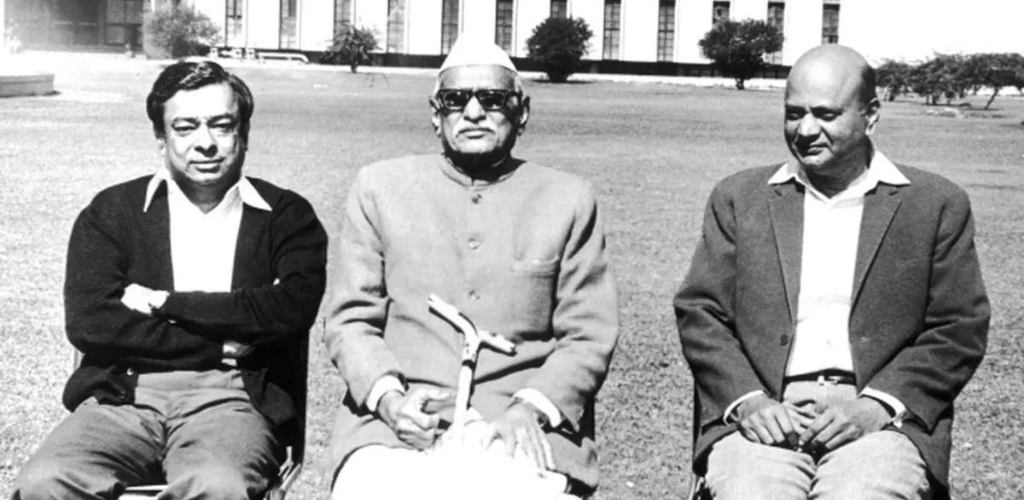Amul is a well-known name in the world of dairy products. Started in 1946 in Gujarat, Amul has grown from a small cooperative to one of the largest dairy brands in the world. It is famous for its high-quality products and catchy advertising campaigns.
Amul, which stands for Anand Milk Union Limited, was created to help dairy farmers get fair prices by cutting out middlemen. This cooperative model gave farmers a direct stake in the company’s success. Today, Amul operates under the Gujarat Cooperative Milk Marketing Federation (GCMMF) and offers a wide range of dairy products like milk, butter, cheese, yogurt, and ice cream.
Marketing has played a big role in Amul’s success. The brand’s marketing strategies have helped build a strong identity and loyal customer base. Amul’s advertising campaigns, especially the Amul Girl series, are known for their humor and relevance. Amul’s approach includes targeting both rural and urban markets, using traditional and digital media, and adapting to changing consumer needs.
In the following sections, we will explore Amul’s marketing strategies, including their rural initiatives, advertising campaigns, pricing strategies, and more, to understand what makes it so successful and Marketing Strategy Of Amul.
The Origins of Amul

Amul’s story began in 1946 in the town of Anand, Gujarat, intending to address the exploitation of dairy farmers by middlemen. Farmers were often paid unfair prices for their milk, leading to widespread dissatisfaction and financial instability. Visionary leaders like Tribhuvandas Patel, with the support of Sardar Vallabhbhai Patel, initiated a cooperative movement to empower the farmers. The cooperative was named Anand Milk Union Limited (Amul). Under the leadership of Tribhuvandas Patel and with the technical expertise of Dr. Verghese Kurien, Amul began its journey.
The cooperative model allowed farmers to sell their milk directly to the union, ensuring fair prices and eliminating middlemen. This initiative not only improved the farmers’ economic conditions but also encouraged the production of high-quality milk.
Since its founding, Amul has achieved several key milestones:
| Year | Milestone |
| 1946 | Amul is founded in Anand, Gujarat. |
| 1955 | Establishment of the Kaira District Co-operative Milk Producers’ Union. |
| 1957 | Introduction of modern processing facilities and expansion of product range. |
| 1966 | Launch of the iconic Amul Girl advertising campaign, known for its witty and topical ads. |
| 1973 | Formation of the Gujarat Cooperative Milk Marketing Federation (GCMMF). |
These are some of the milestones that helped Amul grow from a small cooperative to one of the largest dairy brands in the world.
Founder of Amul Dairy

Amul Dairy was founded by Tribhuvandas Patel in 1946 to address the exploitation of dairy farmers by middlemen. Supported by Sardar Vallabhbhai Patel, he established the Anand Milk Union Limited (Amul), a cooperative model that allowed farmers to sell their milk directly to the union, ensuring fair prices and a share in the profits.
Tribhuvandas Patel’s leadership and vision transformed the dairy industry in Gujarat and laid the foundation for what would become a nationwide movement. Dr. Verghese Kurien, who joined him later, provided technical expertise and innovative approaches, further contributing to Amul’s success. Tribhuvandas Patel’s efforts remain a cornerstone of Amul’s legacy.
The CEO: R.S. Sodhi

As of now, R.S. Sodhi is the CEO of Amul. With over 35 years of experience in the dairy industry, Sodhi has been instrumental in driving Amul’s growth and success. Under his leadership, Amul has seen significant expansion, with the company now offering over 100 different dairy products.
Sodhi has overseen the growth of Amul’s annual turnover to approximately ₹60,000 crore (about $7.2 billion). He has also guided the company in increasing its production capacity to over 500 lakh liters of milk per day.
Sodhi’s strategic focus on innovation, quality, and adapting to market changes has helped Amul maintain its position as a leading dairy brand in India and a significant player on the global stage. His leadership has been key in implementing modern marketing techniques and ensuring high product standards, keeping Amul competitive and relevant.
Leadership and Vision
Amul’s success is closely tied to its leadership and vision. The current CEO, R.S. Sodhi, has been steering the company with a focus on innovation, quality, and market growth. Under his guidance, Amul has broadened its product range, enhanced its supply chain, and reinforced its market position.
The leadership team is key in shaping Amul’s marketing strategies. They prioritize understanding consumer needs and adapting to market trends. This approach is reflected in Amul’s well-known advertising campaigns, such as the Amul Girl series, which cleverly engages a broad audience.
By using both traditional and digital media, Amul’s leadership ensures the brand reaches various market segments, from urban to rural areas. Their focus on product innovation and high quality helps maintain Amul’s strong market presence and relevance.
Marketing Strategy of Amul

Amul’s marketing strategy focuses on building a strong brand presence and connecting with consumers across different demographics. The brand leverages its rich heritage and commitment to quality to appeal to both urban and rural markets. Maintaining a consistent message while adapting to market trends has helped Amul establish itself as a leading dairy brand.
Key Components of Their Strategy
1. Iconic Advertising:
Amul is renowned for its creative advertising campaigns, particularly the Amul Girl series. These ads, which address current events with humor and wit, help keep the brand memorable and engaging. For instance, Amul’s advertising reach extends to over 100 million viewers across various media channels.
2. Product Diversification:
Amul offers a wide range of products, including milk, butter, cheese, and ice cream. With over 100 products in its portfolio, Amul caters to diverse consumer preferences, contributing to an annual turnover of approximately ₹60,000 crore (about $7.2 billion).
3. Rural and Urban Reach:
Amul has a significant presence in rural and urban areas. The company’s products are available in over 2 million retail outlets across India, ensuring widespread accessibility and catering to various market segments.
3. Quality and Innovation:
Amul emphasizes high quality and continuous product innovation. The company’s focus on quality has helped it maintain a daily milk production capacity of over 500 lakh liters.
5. Digital Engagement:
Amul actively engages with consumers through digital platforms. The brand’s social media presence includes millions of followers across platforms like Facebook, Twitter, and Instagram, where it promotes products and interacts with the audience.
By integrating these key components into its marketing strategy, Amul has successfully built a strong brand identity and maintained its leadership in the dairy industry.
Marketing Strategy of Amul in Rural Areas
Amul’s focus on rural markets ensures high-quality dairy products reach a vast population reliant on agriculture and dairy farming. By creating a robust distribution network and partnering with village-level cooperatives, Amul allows farmers to supply milk directly, ensuring fair prices and eliminating middlemen. Amul’s products are available in over 1,500 towns and 200,000 villages across India.
Amul invests in local infrastructure, setting up milk collection centers with modern technology to maintain quality and hygiene. Training programs for farmers on best practices in dairy farming and animal husbandry further enhance milk quality.
Success stories like the Kaira district transformation highlight Amul’s impact. Amul procures milk from over 18,700 village societies, benefiting more than 3.6 million milk producers and collecting over 25 million liters of milk daily. This steady income allows rural households to invest in education, healthcare, and better living standards.
Amul’s commitment to rural markets has expanded its reach and positively impacted millions of farmers, driving the brand’s success and growth in the dairy industry.
Advertising Strategy of Amul

Amul effectively combines traditional and digital media to maximize reach and engagement.
Traditional Media:
Amul’s iconic Amul Girl campaigns appear on over 4,000 billboards across India, using witty humor to capture attention. They also advertise in newspapers, magazines, and on TV, reaching millions and highlighting product quality. Amul spends around ₹500 crores annually on advertising and promotions.
Digital Media:
Amul has a strong social media presence, with over 4 million followers on Facebook alone. They regularly post Amul Girl ads and create interactive content like polls and contests to engage a younger audience. Online ads target specific demographics, boosting visibility and driving online sales.
This combined strategy helps Amul maintain relevance across all age groups, contributing to its annual turnover of approximately ₹60,000 crore (about $7.2 billion) and daily milk collection of over 25 million liters from 3.6 million producers.
We Suggest: Marketing Strategy Of Amul
Amul Advertising Campaign
Amul’s advertising campaigns are famous for their creativity, humor, and relevance. The most iconic is the Amul Girl series, which began in 1966. Featuring a cartoon character, these ads comment on current events with witty, topical humor and are displayed on over 4,000 billboards and various print and digital platforms.
This campaign has been highly effective, contributing to Amul’s strong brand identity and high recall value. The ads respond quickly to current events, making Amul a part of public conversations. Their clever wordplay and engaging visuals ensure they are memorable and shareable.
Amul invests around ₹500 crores annually in advertising. The brand’s presence extends across billboards, print media, and digital platforms, including social media, where Amul has over 4 million Facebook followers and 1 million YouTube subscribers. Each new ad reaches a broad audience, enhancing Amul’s market presence.
Overall, Amul’s advertising strategy, especially the Amul Girl series, has been crucial in building a strong, positive brand image, contributing to Amul’s annual turnover of ₹60,000 crore (about $7.2 billion) and daily milk collection of over 25 million liters from 3.6 million producers.
Amul Pricing Strategy
Amul’s pricing strategy balances affordability, quality, and competitive positioning to maintain a strong market presence.
Amul uses a cost-plus pricing model, setting prices based on production costs plus a margin. They also apply penetration pricing for new products, initially offering lower prices to attract customers. For instance, Amul’s cheese is introduced at competitive rates to gain market share.
The brand positions itself as a value-for-money option, with milk priced around ₹60-₹70 per liter, often lower than premium brands. This affordability is supported by Amul’s efficient supply chain and large-scale production, which includes daily milk collection of 25 million liters from over 18,700 village societies. With an annual turnover of about ₹60,000 crore (approximately $7.2 billion), Amul effectively manages its pricing strategy.
Amul’s value proposition focuses on quality and affordability. For example, Amul butter is priced around ₹500 per kilogram, much lower than imported premium brands. The brand’s wide range of over 200 products, including milk, butter, and cheese, maintains high quality while remaining budget-friendly.
Overall, Amul’s pricing strategy integrates cost management, competitive positioning, and value for money, contributing to its market leadership and consumer trust.
Distribution and Supply Chain

Amul’s distribution and supply chain are central to its success, ensuring its products reach millions of consumers efficiently and reliably.
Distribution Network
Amul operates one of India’s largest and most efficient dairy distribution networks. The company’s distribution system includes:
1. Extensive Network:
Amul’s products are distributed through over 4 million retail outlets across India, including supermarkets, local kirana stores, and dairies.
2. Cold Chain Logistics:
Amul employs a robust cold chain infrastructure to maintain product freshness. This includes refrigerated transport and storage facilities that ensure products, especially dairy items, are kept at optimal temperatures from production to point of sale.
3. Regional Distribution Centers:
Amul has regional distribution centers strategically located to manage inventory and facilitate quick delivery across different regions.
Supply Chain Efficiency
Amul’s supply chain is characterized by its efficiency and scale:
1. Milk Collection:
Amul sources milk from over 3.6 million dairy farmers through a network of 18,700 village societies. The company collects around 25 million liters of milk daily, ensuring a steady supply for its product range.
2. Processing Facilities:
Amul operates numerous processing plants across India, where milk is processed into various dairy products like milk, butter, cheese, and ice cream. These facilities use advanced technology to maintain high quality and efficiency.
3. Quality Control:
Amul maintains stringent quality control measures at every stage of the supply chain, from sourcing raw milk to final product distribution. Regular checks and testing ensure product safety and consistency.
Overall, Amul’s well-organized distribution and supply chain network is crucial to its success, enabling the brand to serve a vast consumer base across India efficiently and reliably.
Corporate Social Responsibility (CSR)
Amul’s Corporate Social Responsibility (CSR) initiatives are integral to its brand identity and community impact, focusing on development, sustainability, and marketing.
Community Development
Amul plays a crucial role in community development by supporting over 3.6 million dairy farmers through fair pricing, resources, and training. This support helps improve their livelihoods and promotes rural growth. Additionally, Amul funds health camps and educational programs in rural areas, enhancing healthcare access and educational opportunities for underserved communities.
Sustainability Initiatives
Amul is committed to sustainability through various environmental and social practices. The company implements waste management and energy conservation strategies to reduce its carbon footprint. Modern, energy-efficient technologies are used in processing plants, and sustainable sourcing practices ensure environmentally friendly dairy farming.
CSR Campaigns and Marketing Impact
Amul’s CSR campaigns are designed to highlight its contributions to community welfare and sustainability, integrating these efforts with its marketing strategy. Campaigns that showcase support for farmers and environmental initiatives strengthen Amul’s brand image as a responsible and caring company. By aligning CSR with marketing, Amul enhances consumer trust and loyalty, reinforcing its market presence.
Overall, Amul’s CSR efforts effectively contribute to community development and sustainability while boosting its brand reputation and consumer engagement.
Also Read: AI for Market Intelligence
Conclusion
Amul’s marketing strategy is a key factor in its success and market leadership. The brand combines traditional and digital media effectively, with iconic campaigns like the Amul Girl series keeping it relevant and engaging.
Amul’s pricing strategy balances affordability and quality through cost-plus and penetration pricing, supported by a strong distribution network that reaches a wide audience. Additionally, its CSR initiatives—supporting farmers, funding health and education programs, and implementing sustainability practices—enhance its brand reputation and consumer trust.
Overall, Amul’s integrated marketing approach, including impactful advertising, strategic pricing, and meaningful CSR efforts, has solidified its position as a leading dairy brand in India, driving both market success and strong consumer loyalty.











